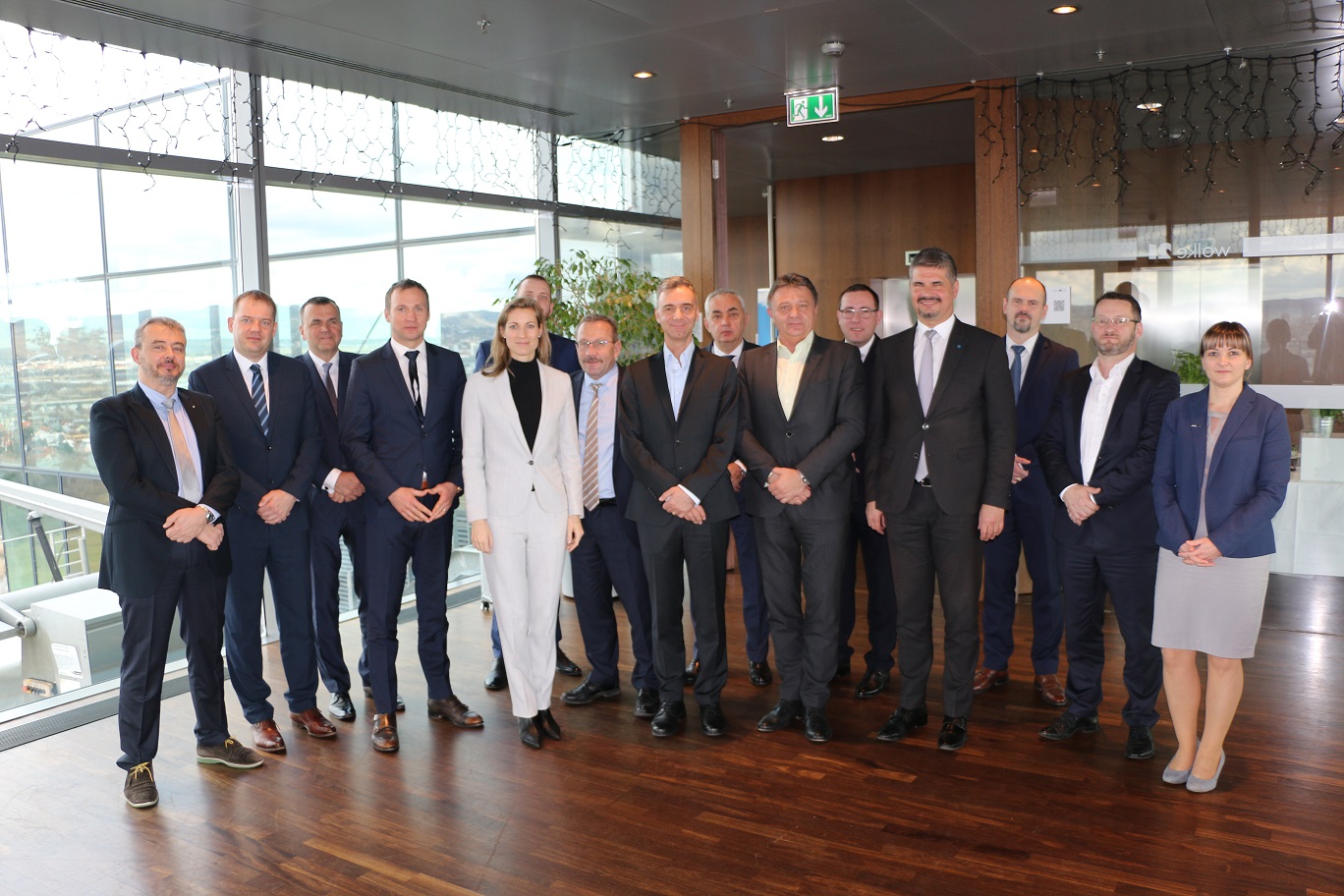The new FAB CE operational strategy was endorsed by chief executive officers (CEOs) at the FAB CE CEO Committee meeting in Vienna on 18 February.
“The approval by FAB CE CEOs of the new strategy marks a major milestone of the transformation of FAB CE into a real airspace alliance,” said Valerie Hackl, Chair of the FAB CE CEO Committee. “The European ATM environment is changing and as FAB CE we not only want to be part of that change we want to help shape it.”
In response to the publication in 2019 of The European Airspace Architecture Study (EAAS) and Wise Persons Group report – both of which called for an urgent transformation of European air traffic management services to data-driven, services-based environment with increased collaboration, information sharing and automation - FAB CE has developed a new operational strategy to 2030. FAB CE will transform its structure from an initial, primarily-political organisation into a real operational airspace alliance with procedural and technical work programmes tailored to the future ATM environment.
It will optimise its airspace irrespective of national borders and jointly implement the operational excellence programme to provide additional airspace capacity and ensure that the air traffic management system will be able to cope with the future traffic growth, while maintaining or improving current levels of safety, punctuality, cost-effectiveness and environmental impact.
The digital transformation of ATM will also bring many new functions and services, increasingly independent from traditional ATM system architecture. FAB CE air navigation service providers (ANSPs) will pursue an increasing number of complex, performance-enhancing joint activities to bring multiple benefits to all stakeholders. These new programmes will be based on cost benefit analyses (CBAs), while respecting the industrial partnership agreements in place between ANSPs and current systems providers.
The FAB CE Strategic Objectives (FSOs) will focus on cross-border airspace solutions, including concepts such virtual centres, mutually ensured resilience and deployment or smart procurement procedures. They will be achieved either through ‘all-in’ or ‘some-in’ projects/actions, as appropriate.
High-priority FSOs comprise:
- A new, jointly-developed and implemented FAB CE airspace structure compliant with ANSP requirements and the EAAS vision - Through the implementation of a pan-European design this will increase network-wide capacity and resolve local constraints and bottlenecks while taking into consideration interconnectivity of airspace applications.
- Implementation of U-Space in FAB CE – FAB CE ANSPs will coordinate U-Space management of drones by establishing commonality in rules, regulations, systems and services provided.
- Joint implementation of procedures and system functionalities to improve FAB CE ANSPs contingency resilience - There will be further refinement of information and data sharing between FAB CE ANSPs to assist in the management of ANSP contingency events.
- Joint implementation cyber-security procedures and measures - FAB CE ANSPs recognise the need to protect their infrastructure from potential cyber-security threats by preventive and reactive measures.
- Joint planning of FAB CE communications/navigation/surveillance (CNS) infrastructure - FAB CE CNS infrastructure will be rationalised with shared use of common hardware resources where and when possible. This includes a common planning of the infrastructure and smart procurement.
- Joint implementation of enhanced ground-ground data communications capabilities – New ground-ground ATM communications serviced are identified in the EAAS 2030 Vision; FAB CE ANSPs will implement these to improve communications, redundancy and resilience.
- Joint implementation of procedures and systems to enable deployment of ground-air data link communications – FAB CE ANSPs will jointly work towards implementing common ATN B2 and ADS-C based services required for data communications capabilities.
- Common planning and procurement in the aeronautical information management domain - In the future architecture, ATS service providers will have access to multiple services based on different technologies seamlessly integrated at the level of AIM brokering and integration services.
- New framework agreements enabling more extensive use of cross-border services in FAB CE – This covers areas such as financial compensation mechanisms to enable more extensive dynamic cross-border operations; liability agreements enabling more extensive cross-border operations, cross-border safety management process, common training and licensing.
- FAB CE participation in SESAR JU large-scale demonstrations – This ensures active participation in the large scale demonstrator activities of the SJU stemming from the EAAS for the hotspots identified in the FAB CE region
At the CEOC meeting in Vienna the CEOs added an amendment to the strategy to strengthen further collaboration by agreeing that for any future initiatives within the context of the FABCE Strategy objectives, members will first look for partnerships within FAB CE.

